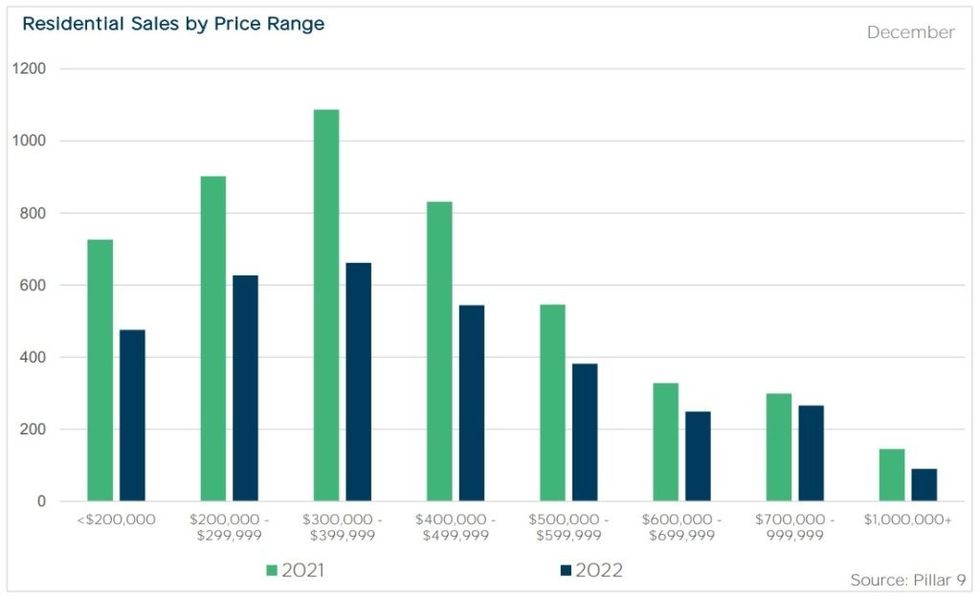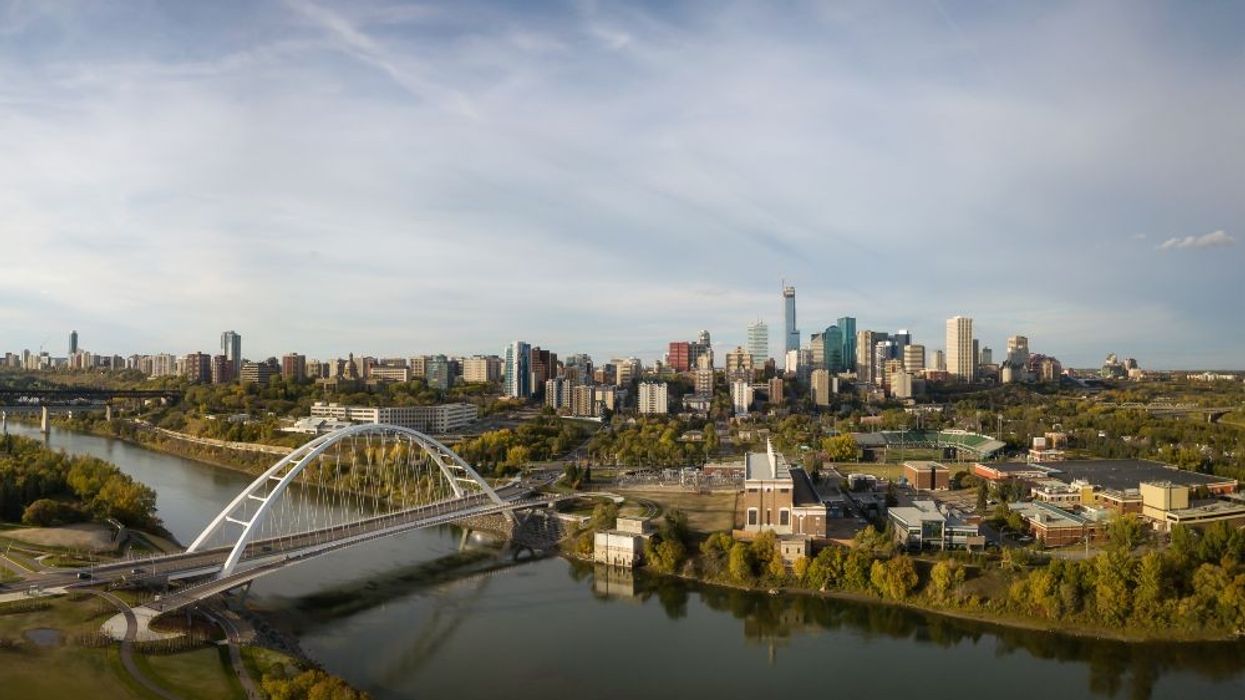Alberta's residential sales started off strong in 2022 before losing steam in the second half of the year, offsetting earlier gains, the Alberta Real Estate Association's (AREA) year-end statistics reveal.
Alberta recorded a total of 84,050 residential sales in 2022 -- a 2% decrease from 2021. However, there was significant variance across Alberta's regions and property types, with many populous areas holding steady or even showing growth.
Calgary and Edmonton led the way, recording 29,672 and 17,303 residential sales, respectively, in 2022. Both totals were increases from 2021, with Calgary's sales improving by 7% and Edmonton's by 1%.
The Red Deer and Grande Prairie regions also showed subtle growth, with the former improving by 4% to 1,966 sales and the latter improving by 1% to 1,421.
On the other end of the spectrum were the Medicine Hat (1,183), Lethbridge (2,039), and Fort McMurray (1,190) regions, which saw decreases of 15%, 12%, and 5%, respectively.
These year-end tallies come after a significant drop off in sales was seen across all seven Alberta regions in December. During that month, every region experienced year-over-year decreases of more than 26%, with Medicine Hat seeing the highest at 57% (but recording the lowest volume of sales). Calgary and Edmonton saw decreases of 31% and 26%, respectively.

Variances Across Property Types
By property type, townhouses and apartments showed notable growth in 2022. Of the 84,050 total residential sales in the province, 10,187 were from townhouses (an increase of 21% over 2021) and 11,423 were from apartments (an increase of 30% over 2021).
Meanwhile, single-detached homes saw the steepest decline, at 9%, but still accounted for the highest volume of sales, at 52,594. Semi-detached homes also saw a decrease (-1%) but accounted for a lower volume of sales than all other property types.
The average price in Alberta was $524,870 for single-detached homes, $431,915 for semi-detached homes, $317,001 for townhouses, and $253,494 for apartments.
New Listings Slip At Year's End
The number of new listings decreased in December in all regions of the province. Calgary and Edmonton, which had the highest volume of new listings, saw the smallest decreases between December 2021 and December 2022, falling 16% and 10%, respectively.
For the year, Calgary and Edmonton were also two of the three regions to see a net increase in new listings. Calgary finished the year seeing 38,893 total new listings, a 3% increase compared to 2021, while Edmonton finished the year with 30,084, a 6% jump from the previous year.
The net total amount of listings for the entire province was 123,453, a 1% increase from 2021.
Prices Still Climbed Up (Mostly) Everywhere
While sales and listings decreased, the year's average prices were up in all but one region, bringing the provincial average to $447,454 -- a 5% increase from 2021.
Calgary finished the year with the highest average of $516,865, marking a 5% increase compared to 2021. Second was Edmonton at $394,057, a 2% increase over 2021. The Medicine Hat region finished the year with an average price of $311,466, the lowest in the province.
Fort McMurray was the only region to see prices decrease compared to 2021, falling 3%. Despite this, the region still ended the year with the third-highest average price, at $383,209.
READ: Death and Taxes: The 25 Alberta Municipalities with the Highest Property Tax
Looking Into The New Year
In their report, AREA said that despite adjustments, sales across all major centres were either in line with, or well above, long-term trends for the province.
"New listings also followed a similar path as sales, with strong gains in the first half of the year, followed by pullback in the second half of the year," the report notes. "The shift in new listings relative to sales did prevent inventories from rising, but the pullback in sales was enough to help the market shift away from the strong sellers’ conditions to one that is more balanced."
After the Bank of Canada rate soared from the 0.25% seen at the beginning of the year to its current 4.25%, real estate markets across the country were thrown for a loop. Industry experts, however, are expecting a bit more stability this year, but AREA notes there will likely be some variance, similar to what was seen in 2022.
"Conditions have shifted throughout the year thanks to rising lending rates and some inventory challenges for lower priced detached homes," the AREA concluded. "As we move into 2023, conditions are expected to vary depending on price range and property type."





















